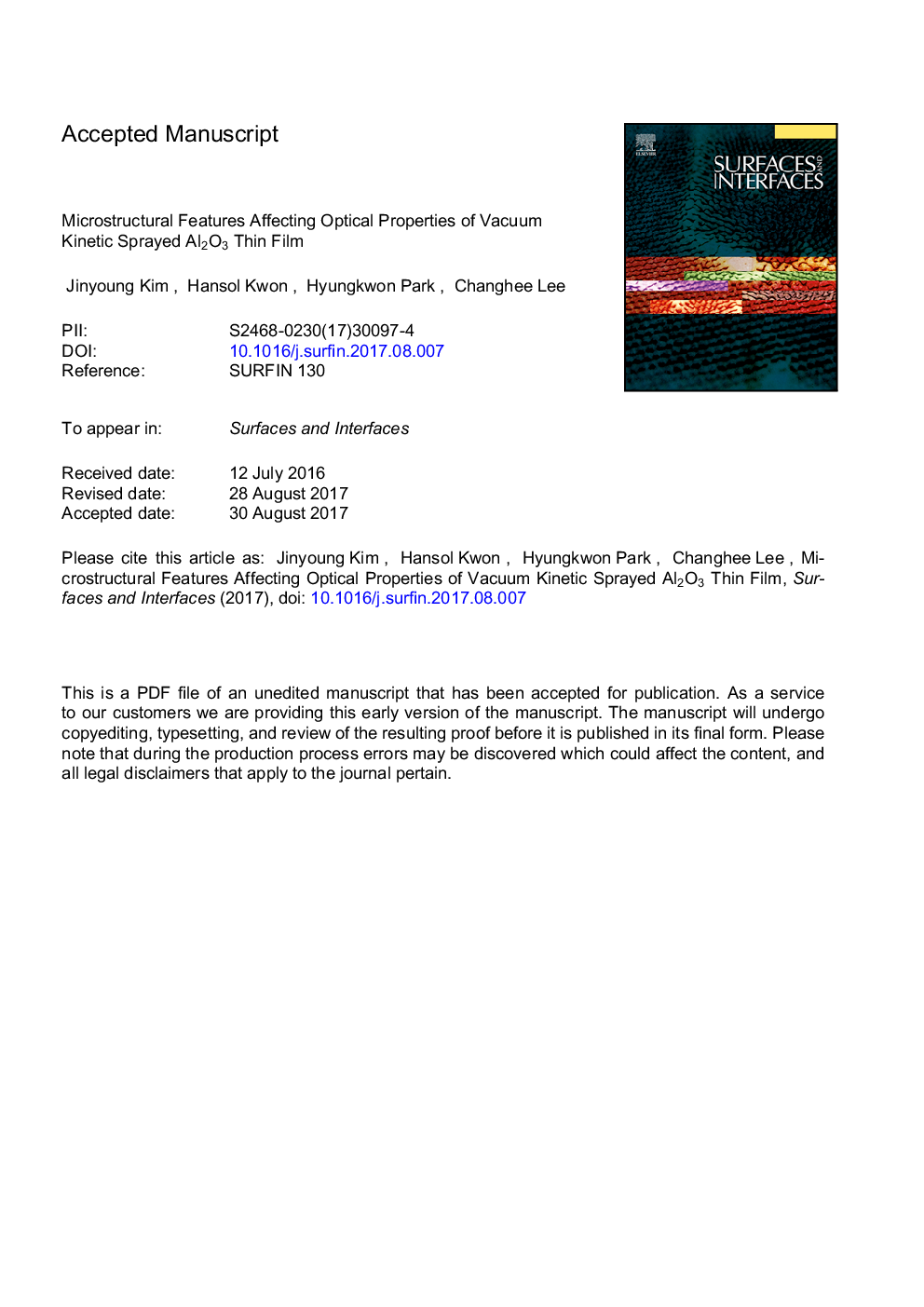| Article ID | Journal | Published Year | Pages | File Type |
|---|---|---|---|---|
| 4985560 | Surfaces and Interfaces | 2017 | 38 Pages |
Abstract
Surface modification technology has been considered as a promising method to enhance the surfaces of glass products to make glass suitable for more stringent applications. Ceramics films are of particular interest due to their outstanding mechanical properties and chemical stability. However, most ceramic materials have poor optical properties, making them unsuitable as coatings for glass. In this research, the effects of changes in microstructural features on the optical properties of vacuum kinetic sprayed Al2O3 films were investigated, and the transmittance was varied over a wide range by controlling the process gas flow rates and heat-treatment conditions. Based on these results Al2O3 film transmittance was determined by four microstructural factors. Specifically, crystallite size (boundary fraction), generated defects or strained lattice, amorphization (or crystallization), and non-equilibrium stoichiometry strongly affected the light path film transmittance.
Related Topics
Physical Sciences and Engineering
Chemical Engineering
Colloid and Surface Chemistry
Authors
Jinyoung Kim, Hansol Kwon, Hyungkwon Park, Changhee Lee,
